- The ERP landscape is highly populated, making it challenging to weigh options and assess which solution will best position your company for growth and success.
- Construction companies operate on a project-based business model. Each project is unique in its requirements making adaptability important in an ERP.
- Every construction company operates in a different domain, making their needs unique, and ERPs are not a one-size-fits-all solution, making the selection of a new ERP difficult.
Our Advice
Critical Insight
- Implementing an ERP in construction is not just about efficiency, its about turning operational data into strategic opportunities. Without a unified data infrastructure, companies cannot leverage their data to optimize operations and gain a competitive edge in an increasingly data-driven industry.
- With the construction industry becoming more complex due to evolving customer demands, having a single data source can ease growing pains and unify business operations.
- The construction industry needs dynamic solutions to keep up with the complexity of their projects. As the industry evolves, the technology stack must follow suit, as legacy solutions are becoming unable to support advanced workloads.
Impact and Result
- Define key trends in the construction ERP market to demonstrate the importance of innovating operations through a comprehensive ERP solution.
- Identify ERP solutions with project-based capabilities to ensure the solution fits with the current and future business model of construction companies.
- Analyze and outline the most important features for construction companies, to thoroughly evaluate different ERP solutions.
Navigating the ERP Landscape for the Construction Industry
Narrow your ERP search and find a solution that works
Analyst Perspective
CIOs in the construction industry can turn operational data into strategic opportunities
An enterprise resource plan (ERP) is a core tool that businesses leverage to accomplish their goals. Construction companies face unique challenges with the complexity of their operations and need comprehensive solutions to support their initiatives.
The construction industry is unique as each company operates in different domains. With the project-based business model these companies follow, it is important for them to remain adaptive within their operations. Construction-specific ERPs are becoming more relevant as the software can fit a company’s specific needs.
As construction companies battle with razor thin profit margins and the increased complexity of projects, real-time data and automation offered by ERPs help streamline processes to improve operational efficiency.
ERPs are becoming essential assets to construction companies. Creating a proper strategy and selecting the vendor that aligns with a specific company is key to setting the stage and positioning the company for continued growth and success.

Michael Adams
91��Ƭ�� Analyst, Construction Industry
91��Ƭ��
Executive Summary
Your Challenge | Common Obstacles | Info-Tech’s Approach |
|---|---|---|
The ERP landscape is crowded, making it difficult to compare options and identify the solution that will best support your company’s growth. Construction operates on a project-based model, and every project brings unique requirements. That means adaptability is essential. No two construction firms are alike. Each operates in a different domain, with different processes and priorities. Choosing the right system requires a clear understanding of your needs and a strategic approach to selection. | Construction operations slow down when new technology is introduced. With the industry's project-based model, there's constant pressure to deliver each project on time. Construction companies feel increasing pressure to adopt new technologies to stay competitive. But a traditional workforce can be resistant to change, adding friction to transformation efforts. Tight margins and limited resources make it difficult to evaluate the return on investment. Many firms are unsure whether new technology is worth the cost. | Highlight key trends shaping the construction ERP market to show why modernizing operations with a comprehensive ERP is essential. Identify ERP solutions with strong project-based capabilities to ensure alignment with both current workflows and long-term business needs. Analyze and prioritize critical ERP features for construction firms to help leaders evaluate and compare options with confidence. |
Info-Tech Insight
In construction, ERP isn’t just about efficiency – it’s about turning data into a strategic asset. Without a unified system, companies can’t harness their data to optimize operations, drive strategy, or stay ahead in a fast-moving, data-driven industry.
Enterprise Resource Planning (ERP)
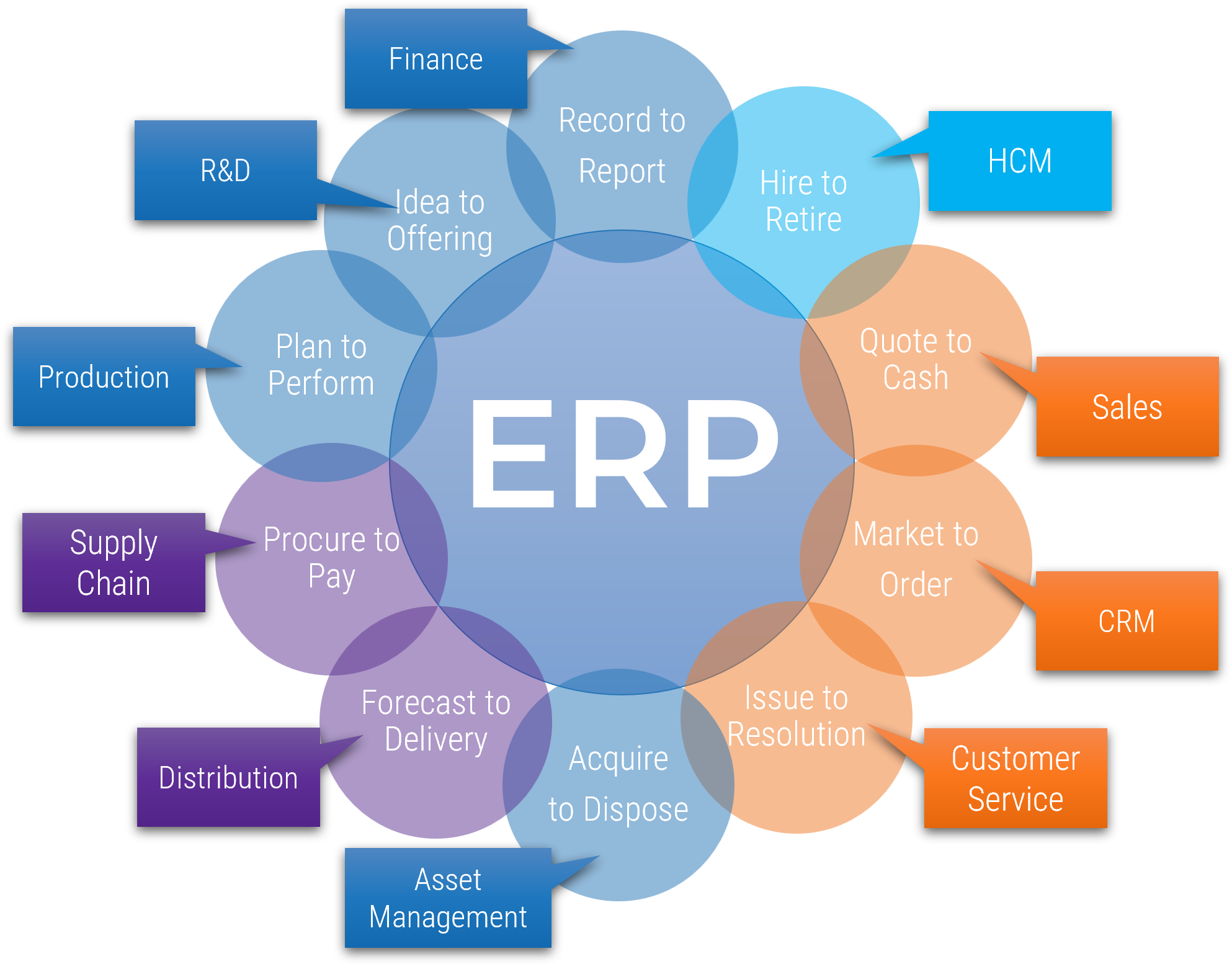
ERPs are a game changer for the construction sector
Enterprise resource planning (ERP) systems facilitate the flow of information across business units. They allow for the seamless integration of systems and create a holistic view of the enterprise to support decision-making.
In many organizations, the ERP system is considered the lifeblood of the enterprise. Problems with this key operational system will have a dramatic impact on the ability of the enterprise to survive and grow.
An ERP system:
- Automates processes, reducing the amount of manual, routine work.
- Integrates with core modules, eliminating the fragmentation of systems.
- Centralizes information for reporting from multiple parts of the value chain to a single point.
Product-Centric
Suitable for organizations that manufacture, assemble, distribute, or manage material goods.
Service-Centric
Suitable for organizations that provide and manage field services and/or professional services.
Map the Integrations That Define Your Construction ERP Ecosystem
Identify how your ERP connects across functions to support a unified, efficient, and future-ready digital environment.
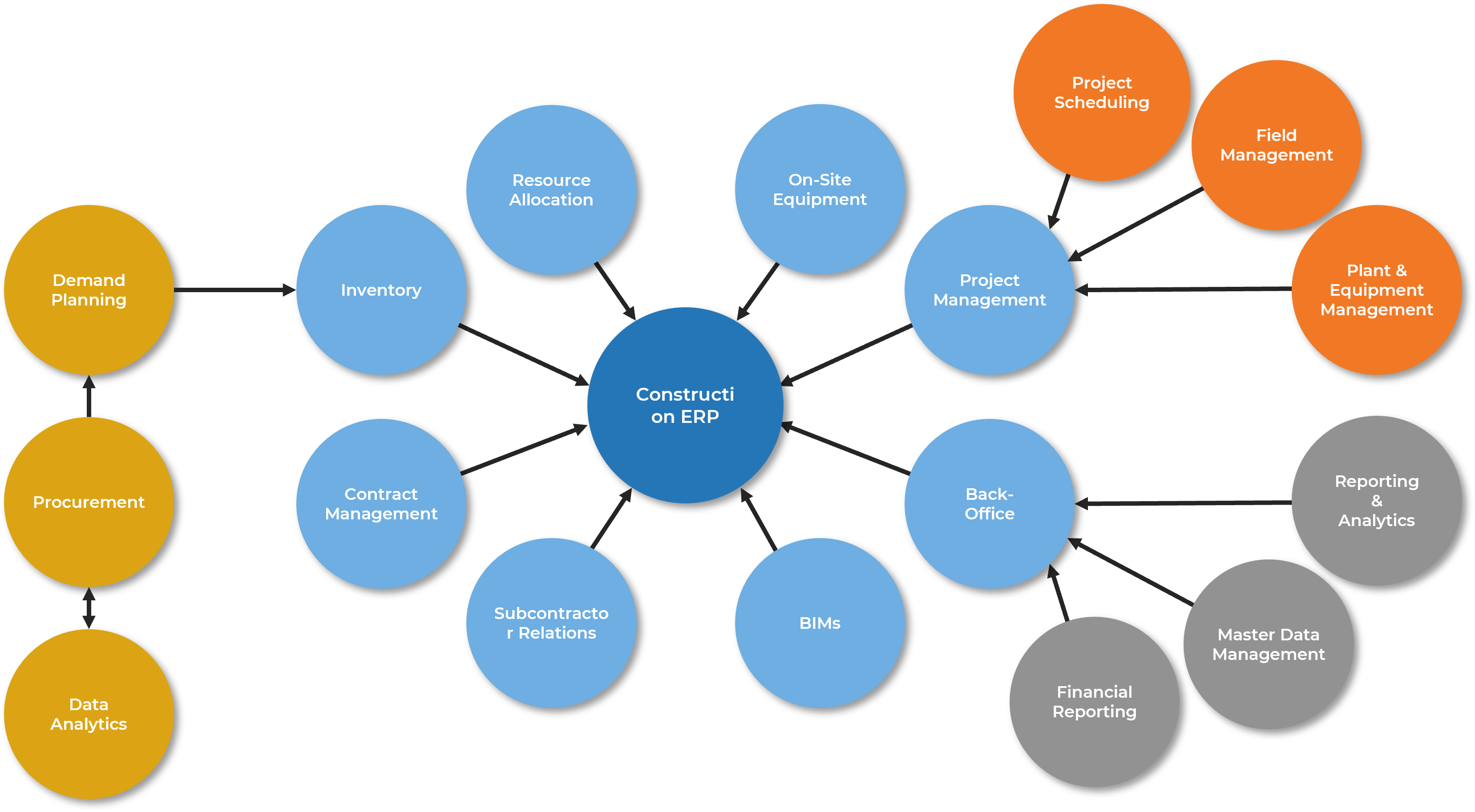
An ERP system integrates all aspects of construction operations
An enterprise resource planning (ERP) tool is essential to any business. It centralizes data from all core operational processes into a single system, streamlining operations through seamless integration.
A construction-specific ERP goes further. While it includes the core capabilities of a generic ERP, it’s tailored to handle the complex, resource-intensive tasks unique to the construction industry.
These tools support the entire project lifecycle. Built with construction at the center, they connect all parts of the business around project delivery.
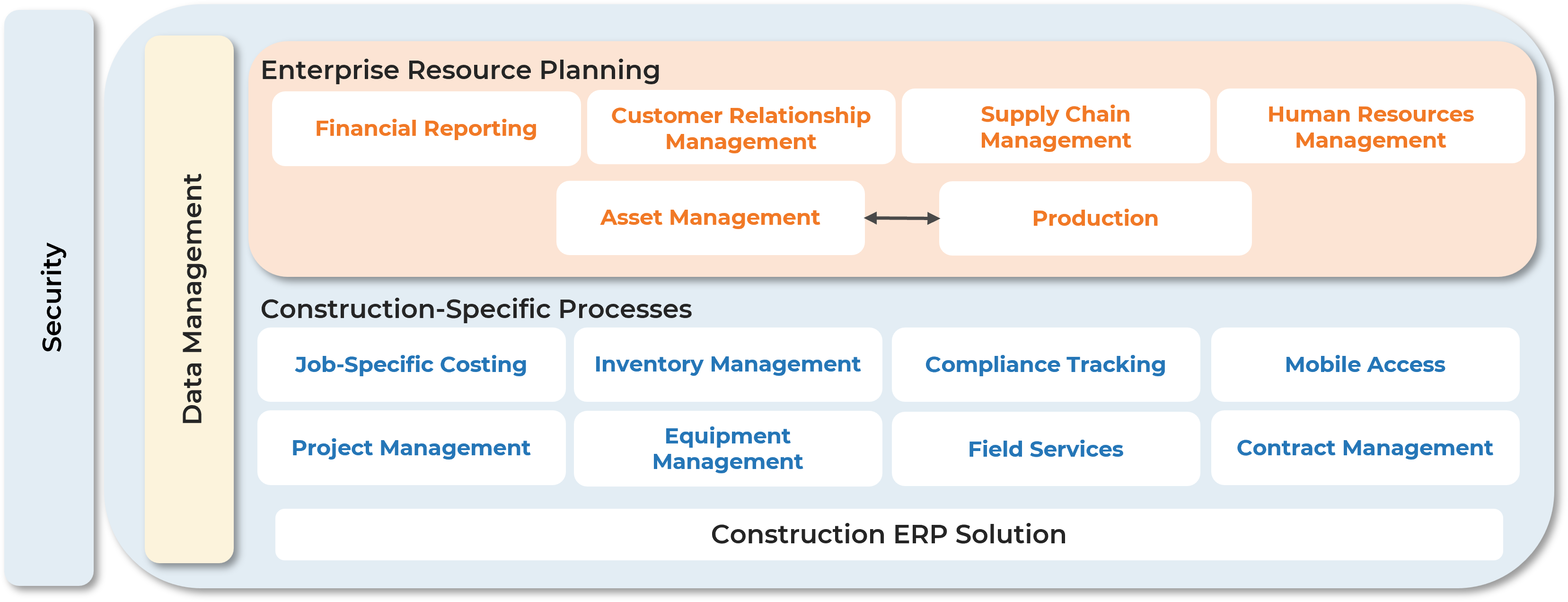
Source: “Construction ERP vs Generic ERP,” Access Group, 2024
Info-Tech Insight
As construction grows more complex, a single source of truth cuts through the chaos and brings your operations together.
The Buyer’s Guide accelerates your success through the Rapid Application Selection Framework (RASF)
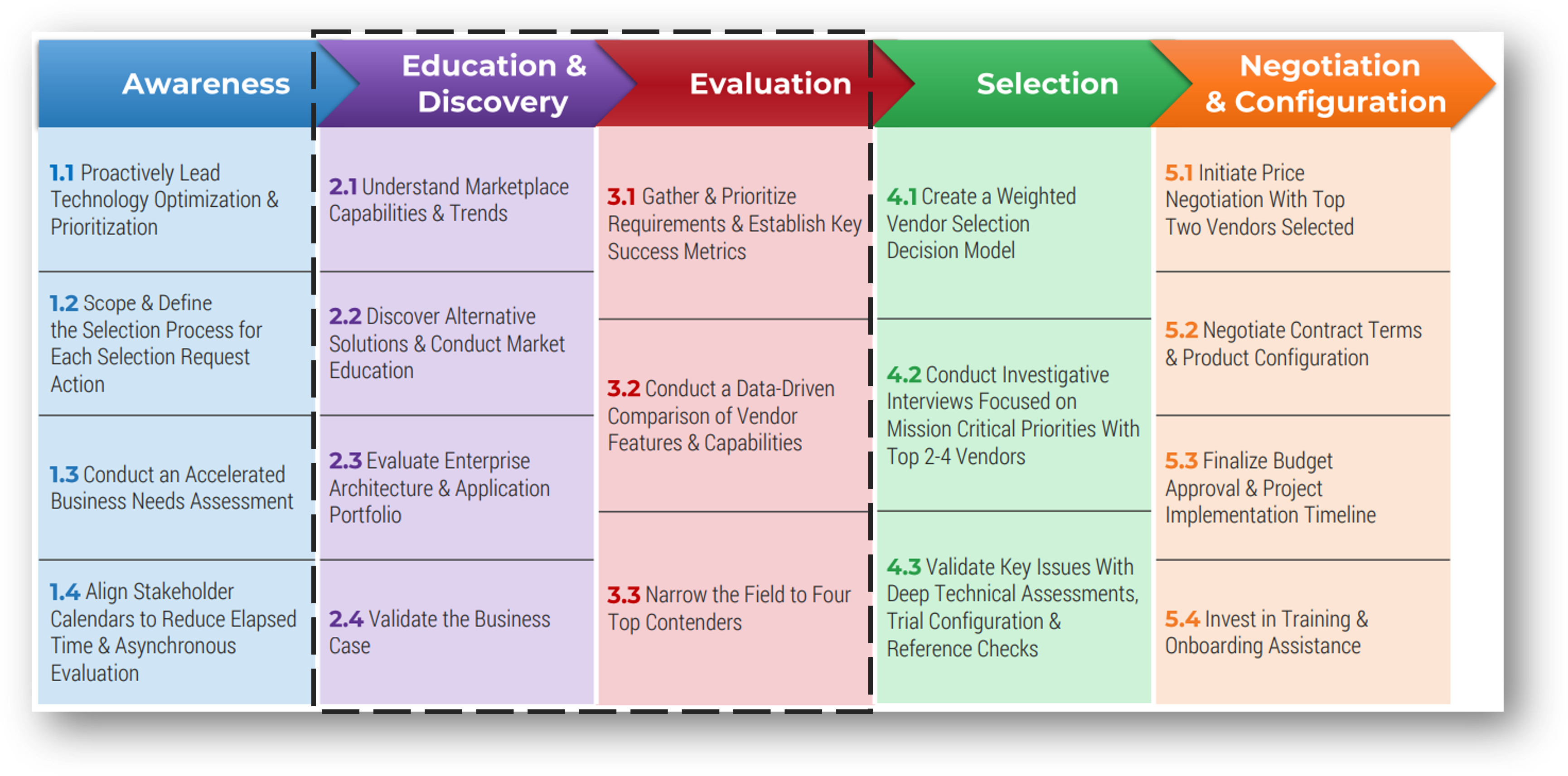
This buyer’s guide will work through activities within the Education & Discovery and Evaluation phases of the RASF. Upon completion of this buyer’s guide, you will be prepared to begin the Selection phase followed by the Negotiation & Configuration phase to begin your digital transformation.
Select an ERP for fit and purpose to transform your company
| 1 | Identify Key Market Trends 1.1 Define special challenges/obstacles for the construction industry | ||
|---|---|---|---|
| 2 | Define Business Requirements 2.1 Determine the organization’s capability map and goals
| 3 | Assess Solutions 3.1 Determine evaluation criteria
|
Info-Tech Insight
The construction industry needs dynamic solutions to keep up with the complexity of its projects. As the industry evolves, the technology stack must follow suit, as legacy solutions are becoming unable to support advanced workloads.
CAD deliverables
Each step of this CAD is accompanied by supporting deliverables to help you accomplish your goals
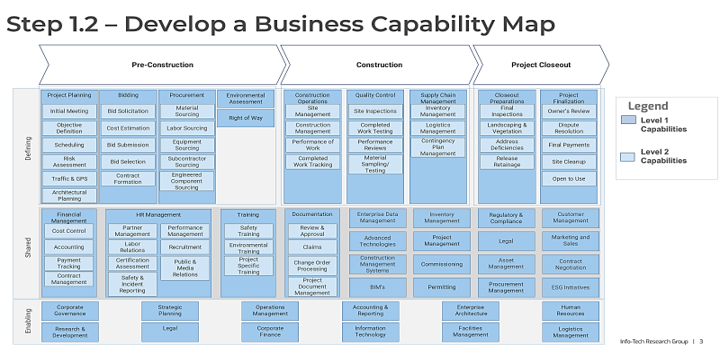 | 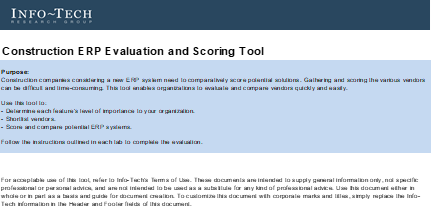 | ||
Identify your company’s capability map, and understand the current information assessment. | 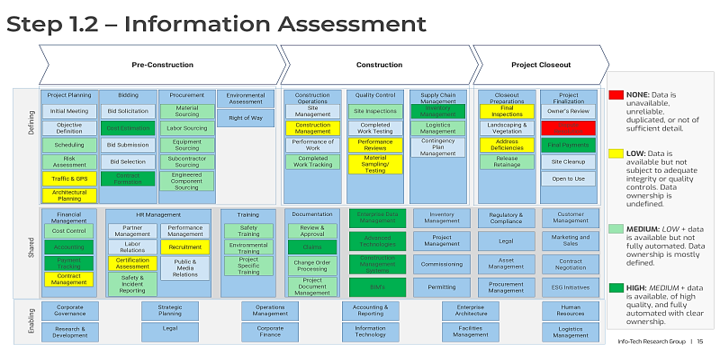 | Evaluate selected vendors to narrow your search, and find the vendor most suitable for your company. | 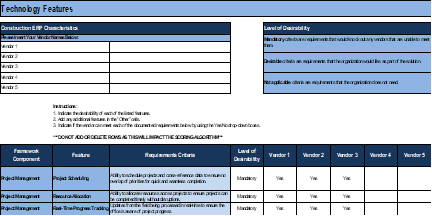 |
Guided Implementation
What does a typical GI on this topic look like?
| Phase 1 | Phase 2 | Phase 3 |
|---|---|---|
Call #1: Scope objectives of new ERP and challenges being faced. Call #2: Understand the market. Call #3: Understand current readiness state. | Call #3: Identify business goals and align objectives. Call #3: Identify target-state information assessment. Call #4: Identify relationship between current state and expected gains. Call #5: Identify key features that mend the gaps. | Call #6: Determine evaluation criteria. Call #7: Score and evaluate solutions. Call #7: Identify next steps. |
A Guided Implementation (GI) is a series of calls with an Info-Tech analyst to help implement our best practices in your organization.
A typical GI is 6 to 8 calls over the course of 4 to 6 months.
Info-Tech offers various levels of support to best suit your needs
DIY Toolkit | Guided Implementation | Workshop | Consulting |
|---|---|---|---|
“Our team has already made this critical project a priority, and we have the time and capability, but some guidance along the way would be helpful.” | “Our team knows that we need to fix a process, but we need assistance to determine where to focus. Some check-ins along the way would help keep us on track.” | “We need to hit the ground running and get this project kicked off immediately. Our team has the ability to take this over once we get a framework and strategy in place.” | “Our team does not have the time or the knowledge to take this project on. We need assistance through the entirety of this project." |
Diagnostics and consistent frameworks are used throughout all four options.
Phase 1
Identify Key Market Trends
Phase 1 | Phase 2 | Phase 3 |
|---|---|---|
1.1 Identify construction-specific challenges 1.2 Analyze the construction ERP market 1.3 Identify intended gains from an ERP | 2.1 Analyze capability maps & organizational goals 2.2 Evaluate current state 2.3 Identify key features | 3.1 Determine evaluation criteria 3.2 Shortlist potential vendors 3.3 Evaluate & score ERP systems 3.4 Avoid common implementation pitfalls |
This phase will produce the following deliverables:
- Impact vs. Readiness Matrix
- Prioritized list of trends and relevance
This phase involves the following participants:
- CIO
- Department leaders
- Senior managers
- Other key stakeholders as appropriate
Overcome challenges with construction ERPs
Understand the common roadblocks – from data silos to workflow confusion – and how to tackle them before implementation.
BUSINESS DISRUPTION
Construction companies operate on a project-based model, where downtime is costly. This makes new initiatives harder to launch, as they require pulling stakeholders away from critical, strategic work, often leading to change resistance.
COST AND EFFORT
Tight profit margins make new investments a challenge for construction companies. To move forward confidently, organizations need a clear implementation plan broken into manageable, phased steps.
BUSINESS PROCESSES IMPACT
Unclear workflows can undermine ERP implementation. Thorough process mapping helps define goals, uncover gaps, and align stakeholders before the system goes live.
DATA MANAGEMENT
Construction data is often siloed across systems. To ensure a smooth ERP migration, organizations must identify, cleanse, and unify this data into a single, reliable source of truth.
Source: Forbes, 2024
Embrace the Future of Construction ERP
Technology is transforming construction ERP. Discover the top trends driving innovation and reshaping how firms operate.
| 1 | The acceleration of digitization for the industry: The demand for digitization is increasing, and companies are finding success in digitization through the means of modern ERPs.
|
|---|---|
| 2 | The shift to cloud-based solutions: Cloud-based solutions offer more scalability and have revolutionized the ERP space, offering digital transformation and greater flexibility for construction companies.
|
| 3 | The ability to integrate with other systems: The need for a solution that can integrate with existing solutions to eliminate data silos and compile data for strategic uses is becoming increasingly important.
|
| 4 | The demand for artificial intelligence (AI)/machine learning (ML) capabilities: The ability to enhance decision-making with predictive insights and allow for accurate forecasting allows managers to anticipate project needs. They can streamline routine tasks to open human intervention for strategic initiatives.
|
Implementing a new ERP system has benefits
DATA ACCURACY & INTEGRITY
Compiling data into one, unified source gets rid of data silos, integrating data from all processes, improving accuracy.
RELIABILITY & RESILIENCE
Using an ERP and integrating data from all processes will mitigate operating risk.
PROJECT MANAGEMENT
ERP offers the possibility of tasks like scheduling and cost tracking to be streamlined, improving project management.
COLLABORATION
Data being brought in from numerous sources centralizes communication, facilitating efficient collaboration among departments.
PRODUCTIVITY
Processes can be automated and real-time visibility will create more efficient processes, boosting productivity for manual intervention in more strategic tasks.
Efficiency gains from integrated construction management boost profits
Hartzell streamlined their operations and alleviated growing pains
INDUSTRY: Construction
SOURCE: Acumatica, 2024
Challenge | Solution | Results |
|---|---|---|
Hartzell Construction continued to see growth as their company expanded their service offering and their legacy systems were no longer sufficient in providing value, signaling the company to look for potential upgrades. They found themselves operating with lengthy, error-prone processes due to large amounts of paperwork and manual labor. This caused frustration due to wasted time and resources on rework fixing errors. | Hartzell Construction wanted to integrate their unique operations, so they sought out a cloud software solution specifically tailored to construction management, which is where they found Acumatica Construction Edition. They got an all-encompassing solution that helped manage projects, costs, contracts, and schedules, and integrated all the data to make data-driven decisions while being extremely user-friendly, in office and in the field. | Hartzell Construction experienced immense gains including but not limited to:
|
Activity 1.1 Map Priorities With Impact vs. Readiness
1. Identify the most relevant market trends
Engage stakeholders in a conversation about the trends and features that matter most to your organization. Encourage open discussion to explore all possibilities and think long-term.
- What features would benefit us now, in five years, and in ten years?
- How would these features shape our organization?
2. Assess readiness for key features
Discuss the feasibility of adopting these features and evaluate your organization’s readiness for ERP-driven changes.
- How would this feature (e.g. cloud-based) impact our operations?
- Can we implement it now, or should we plan for it in the future?
3. Use an impact vs. readiness matrix
Gather input from stakeholders to assess and prioritize features based on potential impact and organizational readiness. This provides strategic clarity when selecting ERP features.
4. Identify gaps and opportunities
Review the matrix to highlight areas of opportunity and gaps that need to be addressed.
| Input | Output |
|---|---|
|
|
| Materials | Participants |
|
|
Activity 1.1 Map priorities with impact vs. readiness
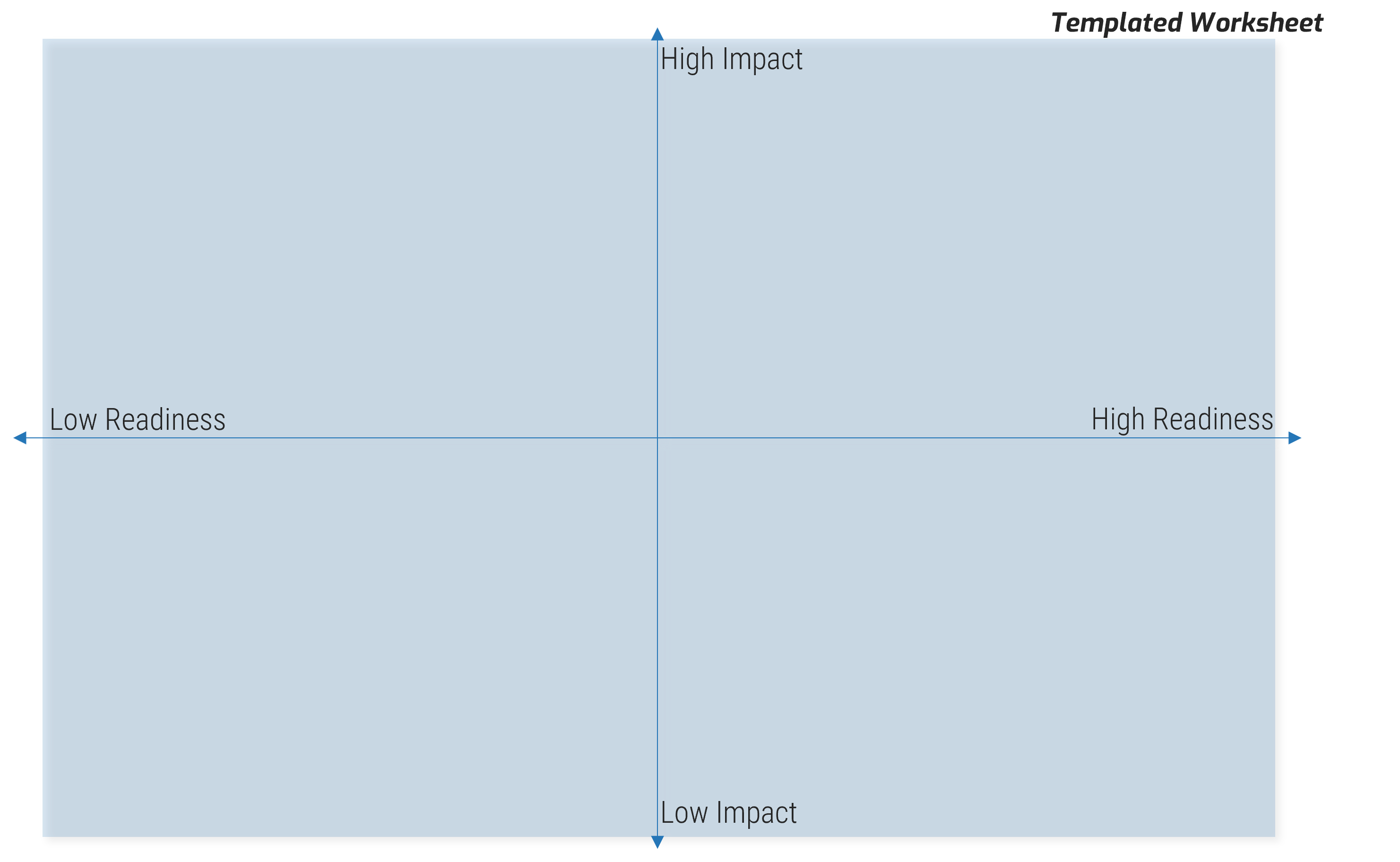
Phase 2
Define Business Requirements
Phase 1 | Phase 2 | Phase 3 |
|---|---|---|
1.1 Identify construction-specific challenges 1.2 Analyze the construction ERP market 1.3 Identify intended gains from an ERP | 2.1 Analyze capability maps & organizational goals 2.2 Evaluate current state 2.3 Identify key features | 3.1 Determine evaluation criteria 3.2 Shortlist potential vendors 3.3 Evaluate & score ERP systems 3.4 Avoid common implementation pitfalls |
This phase will produce the following deliverables:
- Business Capability Map
- Current state information assessment
This phase involves the following participants:
- CIO
- Department leaders
- Senior managers
- Other key stakeholders as appropriate
Analyze business goals and objectives
Identifying business goals is the first step in aligning your team with the business vision for making a technological transformation.
Overall, businesses need to ensure they leverage IT strategically and position it as a value generator, rather than a cost center. | Key Tactics to Identify Organizational Goals
|
| 55% of CxOs believe there is too much focus on short-term ROI versus long-term value measures when understanding IT investments. Source: Deloitte Insights, 2023 | 69% of technology leaders understand they need to get better at helping the board understand the potential gains of new technologies. Source: KPMG, 2023 |

